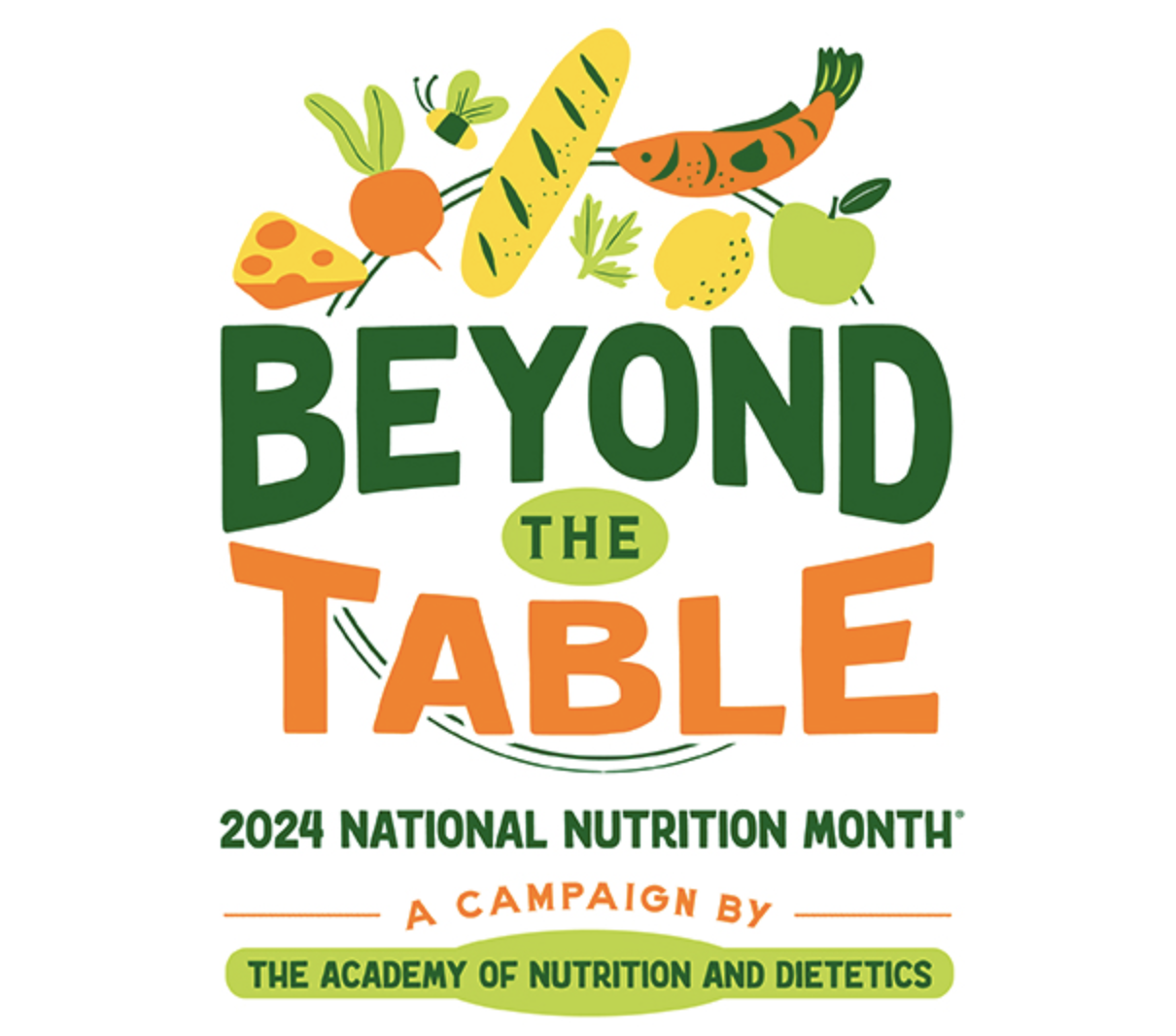
March is National Nutrition Month,® which is an annual campaign created in 1973 by the Academy of Nutrition and Dietetics. During the month of March, everyone is invited to learn about making informed food choices and developing healthful eating and physical activity habits.
This year's theme is "Beyond the Table," which addresses the farm-to-fork aspect of nutrition, from food production and distribution to navigating grocery stores and farmers markets — and even home food safety and storage practices. It also describes the various ways we eat — not only around a dinner table, but also on the go, in schools and restaurants, at games and events. This theme also includes sustainability, for instance, decreasing food waste from school and work to home and beyond.
Eat Right and Reduce Food Waste

People rarely talk about the foods they toss out, yet the topic of food waste is getting a lot more attention these days.
It’s been estimated that Americans throw away billions of pounds of food each year either at home or when eating out. And that amount doesn’t even include the food that goes uneaten at the grocery store or the crops that are left in farmers’ fields.
Not all food that is wasted can be saved and eaten, but it’s been proven that a lot of food waste could be prevented, especially at home. A good place to start is right in your own kitchen.
Here are a few tips that will help:
Plan Meals Based on the Foods You Already Have on Hand
- Look in the refrigerator, freezer and pantry for foods that need to be used up.
- Write a list of the ingredients you still need.
- Buy only the amount of perishable foods that can be eaten or frozen within a few days. This is especially true for foods, like fresh fruits, vegetables, meats, dairy products and seafood.
Get Creative with Leftovers
- Transform meals into soups, salads or sandwiches by cutting up leftover veggies and cooked meats.
- Use as a topping for salads or cooked grains like rice or pasta.
- Wrap in a tortilla or stuff into a pita for a satisfying sandwich.
- Combine to make soup, then enjoy or freeze for future use.
- Eat as a leftover meal later in the week.
- Or simply brown bag the leftovers for lunch.
Master the Shelf Life of Foods
Many foods and drinks purchased at the grocery store include a date, which indicates when it should be used or sold by. Because these dates refer to the product’s quality, it doesn’t necessarily mean they should be thrown out.
- “Use by”, “Best by” and “Best Before” dates are found on foods, such as mustard, salad dressing and ketchup. These products usually don’t need to be refrigerated until opened. In many cases, they are safe to eat beyond the date as long as they have been stored properly.
- “Sell by” dates are displayed on perishable foods, such as meats and dairy products. It’s possible these foods may be used a few days after that date, as long as they were stored at a safe temperature.
Other Ways to Go Further with Food
- Be mindful of portion sizes. Choose smaller portions to stay within your calorie needs, as MyPlate recommends.
- Order smaller sizes of foods and drinks when eating away from home. Or ask for a to-go container at the start of a meal.
- Learn how to properly can or dehydrate foods at home.
- Donate extra foods that are still safe to eat to a local food pantry or shelter.
- Consider composting.
Source: Academy of Nutrition & Dietetics


